Evaluating the stock market's rally versus the economic reality
US markets are doing better than the economy suggests
Over the long term, stock markets have presented a reasonable nexus with underlying economic activity. Earnings growth tends to link the two together.
However, over the short term, the market’s focus on the future means that the connection is more tenuous. This is the ‘P’ in the P/E multiple, which is currently at 21.3x for the S&P500 Index (based on Bloomberg's 12-month forward earnings).
The linkage with economic conditions can be shown when 12-month returns for the S&P500 are plotted alongside a bellwether economic indicator, in this case, the ISM Manufacturing Index. We have rebased this index to reflect a positive reading when the economy is expanding and a negative reading when in contraction.
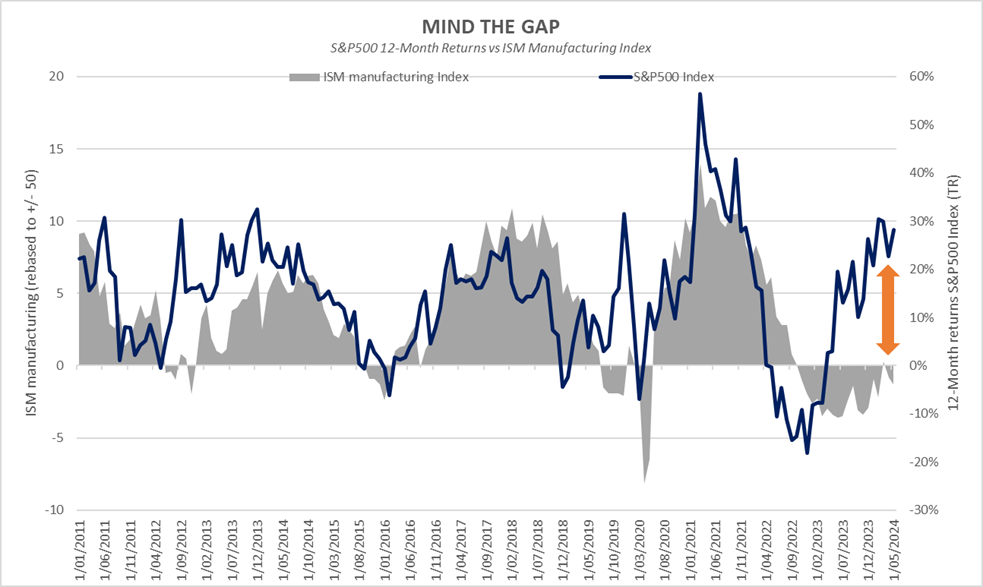.png)
Source: Wheelhouse, Bloomberg
We would highlight that the ISM Manufacturing Index ignores the services component of economic growth in the US, which is generally more stable and has been more consistently positive over this period (and explains why overall economic growth recently has been positive). However, as a way of highlighting the cyclicality of the US economy, the Manufacturing Index does a good job.
As the chart highlights, the recent divergence of the S&P500 versus underlying economic conditions suggests there seems a whole lot of optimism baked into current market returns of the cap-weighted S&P500 Index.
Aye it’s AI
The bulk of investment returns this past 18 months have been driven by a handful of AI-exposed stocks. This outperformance has not been without earnings growth for these names, as the chart below highlights.
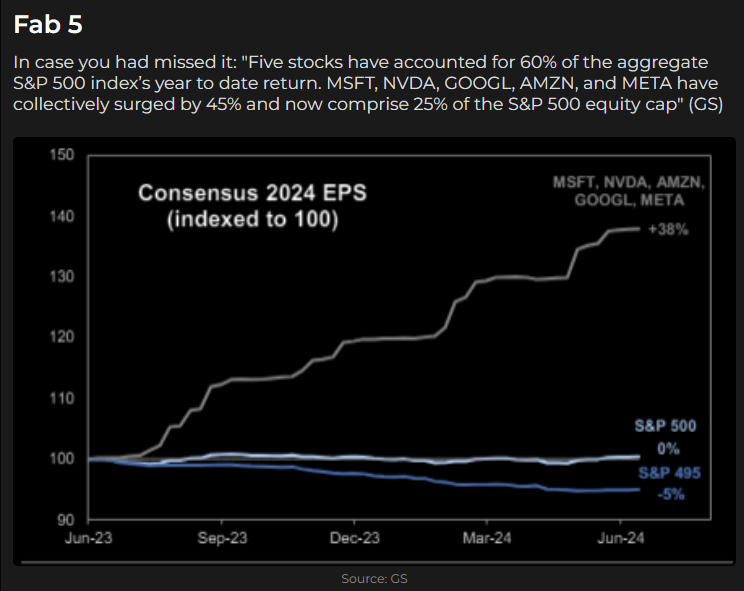.png)
The question for investors might be when and how much of the benefits of AI will flow into positive economic returns for the broader economy and thus the remaining 495 names not highly exposed to the AI phenomena.
Thus far, at least from an earnings perspective, there seems very little euphoria with earnings expectations for the remaining 495 stocks in the S&P 500 slightly weakening over the past 12 months.
While slight earnings downgrades over the year are not unexpected from sell-side analysts, these muted earnings projections are broadly consistent with the economic reality coming from the industrial/manufacturing exposed sectors of the economy.
A better exposure for economic recovery
For investors positive on the prospects for economic recovery, but fearful of the AI valuation baked into the cap-weighted indexes, one alternative might be to consider an equally-weighted index.
Equal-weighted indexes structurally underweight the large mega-tech names, where a lot of the good news on AI is potentially already in the price. As a result, equally weighted indexes have generally experienced significant underperformance over the past 18 months and are far less frothy from a valuation perspective.
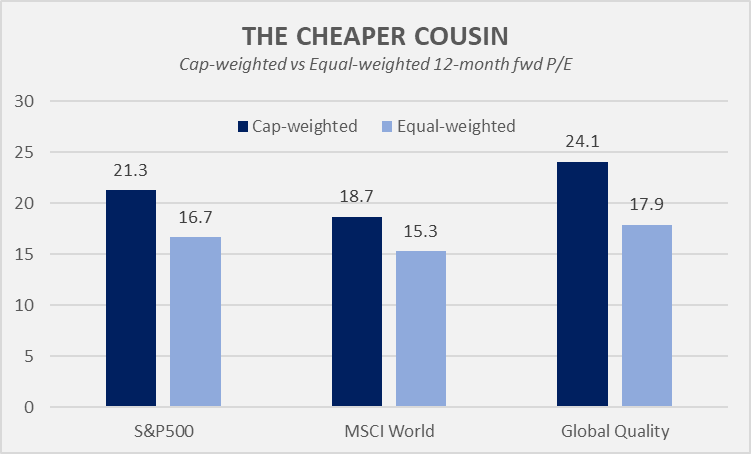.png)
Equally weighted indexes in the US and globally have historically outperformed cap weighted over the long-term, due in part to the consistent trimming of winners and buying of losers. However, when market concentration builds and the larger, more expensive stocks get bigger relative to the average share, equally-weighted indexes will structurally underperform.
This is exactly what happened in March 2000 as market concentration spiked and is just as apparent as what we are witnessing today.
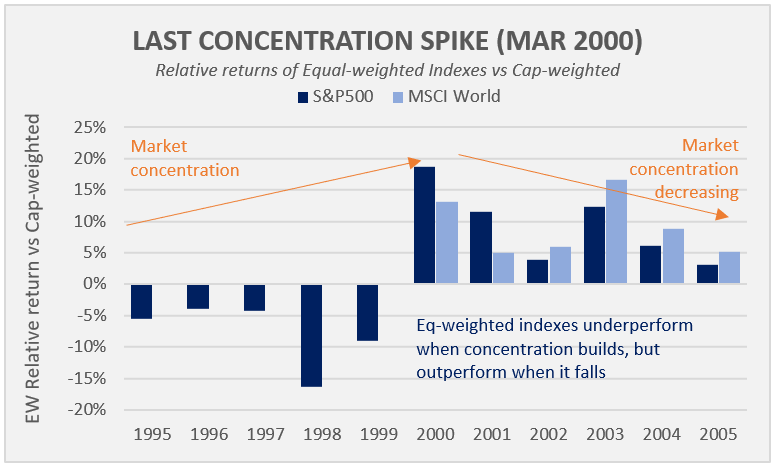.png)
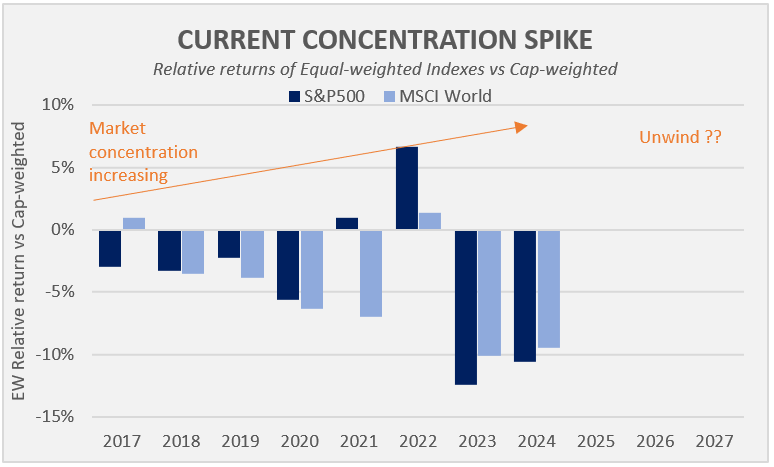.png)
Source: Wheelhouse, Bloomberg. No Equal-weighted MSCI World data available before 2000
Outsized growth becomes much harder to achieve on a very large base. Should the US economy continue to steadily recover, we would expect broader economic exposures with less premium in their prices to perform well. When this occurs, market breadth will return, market concentration will unwind, and equal-weighted index exposures will likely outperform.
Our Global fund owns an equally weighted Global Quality index and is short a cap-weighted Index option as part of the overlay. Over the past 18 months, these exposures have both suffered from the concentration spike in Global equity markets.
We do not believe this is a permanent impairment. Once market concentration unwinds, we believe both exposures will help provide tailwinds for the strategy, potentially for many years as evidenced during the previous major concentration unwind in the early 2000’s.
3 topics

